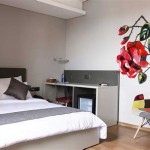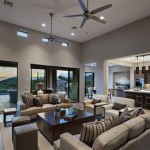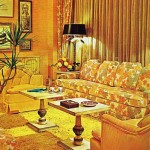Exploring Diverse Interior Decorating Styles
Interior decorating encompasses a broad range of styles, each reflecting distinct aesthetic principles, historical influences, and cultural preferences. Understanding these various styles is crucial for creating a cohesive and personalized living space that aligns with individual tastes and functional needs. The choices made regarding color palettes, furniture selection, material usage, and overall spatial arrangement contribute significantly to the final ambiance and character of a room.
This article aims to provide an overview of several prominent interior decorating styles, highlighting their defining characteristics and key elements. By exploring these diverse approaches, individuals can gain valuable insights into identifying their preferred aesthetic and effectively implementing it in their own homes.
Modern Style: Embracing Simplicity and Functionality
Modern interior design, often confused with contemporary design, is rooted in the design movements of the early to mid-20th century. It prioritizes clean lines, functionality, and a lack of excessive ornamentation. The emphasis is on creating a streamlined and uncluttered environment that promotes a sense of calm and order.
Key features of modern style include the use of neutral color palettes, often incorporating shades of white, beige, and gray, with occasional pops of color as accents. Furniture typically features simple geometric shapes and is constructed from materials like wood, metal, and glass. Open floor plans are common in modern homes, allowing for natural light to flow freely and create a sense of spaciousness. Minimalism is a core principle, with careful consideration given to the placement of each object in the room.
Textiles used in modern interiors are often natural and understated, such as linen, cotton, and wool. Patterns are generally avoided, or if present, are subtle and geometric. Accessories are kept to a minimum, with a focus on functional items like lighting fixtures and artwork that serve a purpose beyond mere decoration. The overall goal of modern interior design is to create a space that is both aesthetically pleasing and highly practical.
Contemporary Style: Reflecting Current Trends
Contemporary interior design is constantly evolving to reflect the current trends and innovations in the design world. Unlike modern style, which adheres to a specific historical period, contemporary design is fluid and adaptable, incorporating elements from various styles to create a unique and up-to-date look.
A key characteristic of contemporary design is its emphasis on open space and natural light. Large windows and skylights are often incorporated to maximize the amount of sunlight entering the room. Similar to modern design, contemporary spaces often feature neutral color palettes, but with a greater willingness to incorporate bold accent colors and dramatic textures. The use of sustainable and eco-friendly materials is also a growing trend in contemporary design.
Furniture in contemporary interiors tends to be sleek and minimalist, often featuring curved or asymmetrical shapes. The use of metal, glass, and concrete is common, along with natural materials like wood and stone. Artwork plays a significant role in contemporary design, with abstract paintings, sculptures, and photography often used to add visual interest and personality to the space. Ultimately, contemporary design aims to create a space that is both stylish and comfortable, reflecting the current sensibilities of the homeowner.
Minimalist Style: Embracing Less is More
Minimalist interior design takes the principles of modern design to an even greater extreme. It is characterized by extreme simplicity, functionality, and a deliberate lack of clutter. The focus is on creating a space that is calming, uncluttered, and conducive to mental clarity.
The color palette in minimalist interiors is typically very limited, often consisting of only one or two neutral colors, such as white, gray, and black. Furniture is sparse and functional, with each piece carefully selected for its purpose and aesthetic appeal. Ornamentation is almost entirely absent, with only a few carefully chosen accessories used to add visual interest.
Storage solutions are a key component of minimalist design. Built-in cabinets and hidden storage compartments are often used to keep clutter out of sight. The emphasis is on creating a space that is both visually appealing and highly organized. Minimalism is not just a design style; it is a lifestyle choice that emphasizes simplicity and intentionality. It promotes a sense of calm and order, allowing individuals to focus on what is truly important to them.
Traditional Style: Timeless Elegance and Comfort
Traditional interior design is rooted in the classic styles of the 18th and 19th centuries, drawing inspiration from European and American historical periods. It emphasizes elegance, formality, and a sense of timelessness. The focus is on creating a space that is comfortable, inviting, and filled with rich details.
Key features of traditional style include the use of rich color palettes, often incorporating deep reds, blues, greens, and golds. Furniture is typically ornate and detailed, featuring elements like carved wood, turned legs, and plush upholstery. Fabrics are often luxurious and patterned, such as damask, brocade, and floral prints.
Accessories play a significant role in traditional design, with items like antique furniture, porcelain figurines, and framed artwork used to add visual interest and personality to the space. Symmetry is a key element, with furniture often arranged in pairs and decorative elements balanced on either side of a focal point. The overall goal of traditional interior design is to create a space that is both elegant and comfortable, reflecting a sense of history and sophistication.
Bohemian Style: Embracing Eclecticism and Individuality
Bohemian interior design, often referred to as "Boho" style, celebrates individuality, creativity, and a free-spirited approach to decorating. It embraces a mix of different styles, cultures, and eras, creating a space that is unique, eclectic, and reflective of the homeowner's personality.
Key features of bohemian style include the use of vibrant color palettes, often incorporating a mix of bold and saturated colors. Furniture is typically vintage or antique, often sourced from flea markets and thrift stores. Textiles are a key element, with layered rugs, patterned cushions, and textured throws used to add warmth and visual interest to the space.
Plants play a significant role in bohemian design, with a variety of potted plants, hanging plants, and even indoor trees used to bring life and energy to the room. Accessories are often eclectic and personal, with items like travel souvenirs, handmade crafts, and vintage finds used to add character and personality to the space. Bohemian design is all about creating a space that is comfortable, inviting, and reflective of the homeowner's unique style and interests.
Farmhouse Style: Rustic Charm and Cozy Comfort
Farmhouse interior design evokes a sense of rustic charm, comfort, and simplicity. It draws inspiration from rural farmhouses and country living, incorporating natural materials, vintage elements, and a warm, inviting atmosphere.
Key features of farmhouse style include the use of neutral color palettes, often incorporating shades of white, cream, beige, and gray, with occasional pops of color in muted tones. Furniture is typically made from wood, often distressed or reclaimed, and features simple, functional designs. Fabrics are often natural and textured, such as linen, cotton, and burlap.
Accessories play a significant role in farmhouse design, with items like vintage signs, galvanized metal containers, and mason jars used to add character and personality to the space. Open shelving is a common feature, allowing for the display of dishes, cookware, and other kitchen essentials. The overall goal of farmhouse interior design is to create a space that is warm, inviting, and reflective of a simple, rural lifestyle.
Industrial Style: Raw and Urban Aesthetic
Industrial interior design draws inspiration from warehouses, factories, and other industrial spaces, incorporating raw materials, exposed architectural elements, and a utilitarian aesthetic. It emphasizes functionality, durability, and a sense of urban grit.
Key features of industrial style include the use of neutral color palettes, often incorporating shades of gray, black, white, and brown. Furniture is typically made from metal, wood, and leather, and features simple, functional designs. Exposed brick walls, concrete floors, and exposed pipes are common architectural elements.
Lighting fixtures are often industrial-inspired, with pendant lights, sconces, and floor lamps featuring metal shades and exposed bulbs. Accessories are often minimalist and functional, with items like metal toolboxes, vintage maps, and industrial gears used to add character and personality to the space. The overall goal of industrial interior design is to create a space that is functional, durable, and reflective of a raw, urban aesthetic.
Mid-Century Modern Style: A Blend of Retro and Contemporary
Mid-Century Modern interior design refers to the style that was popular from roughly the mid-1940s to the 1960s. It's characterized by clean lines, organic shapes, and a blend of natural and man-made materials creating a sense of retro yet contemporary feel.
Key features include the use of bold colors often combined with neutral backgrounds, geometric patterns, and an emphasis on functionality. Furniture showcases simple, elegant shapes with tapered legs and are crafted from materials such as wood, vinyl, fiberglass and metal. Think Eames chairs, Sputnik chandeliers, and boomerang shapes. Open floor plans are common, connecting the indoor and outdoor living spaces seamlessly.
Accessories are kept to a minimum, with artwork, sculptural objects, and graphic textiles used as focal points. The Mid-Century Modern style emphasizes practicality and comfort, making it suitable for modern living while retaining a sense of history and sophistication.

Interior Design Styles Designteacher

Decorating Styles 101 Find The Interior Design You Love House Principles Styling

Types Of Interior Design Styles Zad Interiors

Types Of Interior Design Styles Modern Minimalist Eps

What S Your Design Style Home Interior Styles Quiz Decor

How To Choose An Apt Design Style For Your House

Decorating Styles 101 Find The Interior Design You Love

13 Types Of Home Interior Design Styles Tradition To Trend

21 Most Popular Types Of Interior Design Styles In 2025 Foyr

Diffe Interior Design Styles Types Of Home Décor







